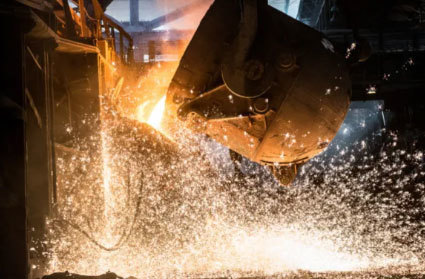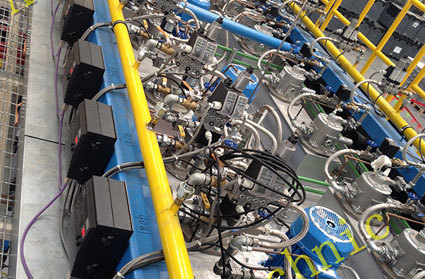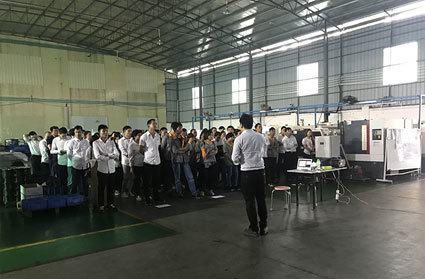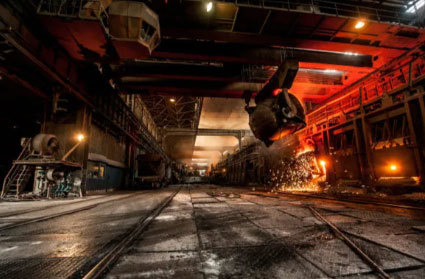Equipment Development of Industrial Furnace
The necessity of pulse combustion in industrial furnace industry
High-grade industrial products have higher requirements for the average temperature field in the furnace, and higher requirements for the non-chaotic controllability of the combustion atmosphere, which cannot be achieved by using traditional continuous combustion control. With the rise of industrial furnaces with wide cross-section and large capacity, pulse combustion control technology is necessary to control the average temperature field in the furnace.
Upwind of pulse combustion control
Pulse combustion control uses a way to interrupt combustion, using pulse width modulation technology, by adjusting the duty cycle of combustion time (on-off ratio) to achieve the temperature control of the kiln. The fuel flow can be pre-set by pressure adjustment, and once the burner is working, it is in a full load state to ensure that the gas outlet speed of the burner is constant during combustion. When the temperature needs to be raised, the burner burning time is lengthened and the interruption time is reduced; when the temperature needs to be lowered, the burner burning time is reduced and the interruption time is lengthened. The main advantage of pulse combustion control is high heat transfer efficiency, which greatly reduces energy consumption. The average of the temperature field in the furnace can be improved. Precise control of the combustion atmosphere can be achieved without online adjustment. Can progress burner load regulation ratio. System is simple and reliable, low cost. Reduces NOx innate. The adjustment ratio of ordinary burner is generally about 1:4. When the burner works at full load, the gas flow rate, flame shape and thermal efficiency can reach the best state. However, when the burner flow is close to its minimum flow rate, the heat load is the smallest, the gas flow rate is greatly reduced, the flame shape cannot meet the requirements, the thermal efficiency drops sharply, and the high-speed burner works below 50% of the full load flow rate, there is a big gap between the above indicators and the design requirements.
Pulse combustion is not the case, no matter under what circumstances, the burner has only two working conditions, one is full load work, the other is not working, only by adjusting the time ratio of the two states for temperature adjustment, so the use of pulse combustion can make up for the defects of low burner adjustment ratio, the need for low temperature control can still ensure that the burner work in the best combustion state. When the high-speed burner is used, the gas is ejected at a fast speed, so that a negative pressure is formed nearby, and a large amount of flue gas in the kiln is sucked into the main gas for full stirring and mixing, thus prolonging the stagnation time of the flue gas in the kiln and increasing the contact time between the flue gas and the product, thus improving the heat transfer efficiency. In addition, the flue gas and the gas in the kiln are fully stirred and mixed to make the temperature close to the flue gas temperature in the kiln, the average of the temperature field in the kiln is improved, and the direct thermal shock of the high temperature gas to the heated body is reduced.
Application of Pulse Combustion Control Technology in Industrial Furnaces
The pulse combustion control technology is widely used in industrial furnace industry, which is composed of high-speed burner and industrial furnace control system. Pulse combustion technology is used to complete the heating and temperature control of industrial furnace. The internal temperature field and temperature wave power of the gas kiln are ± 2°C, and the internal temperature field and temperature fluctuation of the oil (diesel) kiln are ± 3°C. The effect is good in the kiln using heavy diesel oil as fuel. When the internal temperature of the ordinary burner is lower than the spontaneous combustion temperature of the fuel, the flame will extinguish immediately after the fuel of the burner is interrupted, which cannot inherit the combustion and will not affect the temperature in the furnace. The problem of flameout is solved, and the most advanced advanced atomization technology-bubble atomization technology is adopted today, which makes the atomization effect of the burner better and uses less atomization medium. The original kiln burning light diesel can now burn heavy diesel.
In the practical application process, when the combustion duty cycle is adjusted by the ordinary pulse width modulation method, when the duty cycle is close to 0% or 100, the interruption or combustion time is too short, and the operation effect on the scene is not ideal. Therefore, we provoked the concept of minimum time, and set the minimum time of interruption and combustion as 3 seconds. When the duty cycle is close to 0% or 100, this problem can be solved by extending the corresponding combustion and interruption time. As a new technology, pulse combustion has a broad application prospect, which can be widely used in ceramics, metallurgy, petrochemical and other industries. It will play a major role in improving product quality, reducing fuel consumption and reducing pollution. It is an innovation in the automatic control of industrial furnace industry and will become the development direction of industrial furnace combustion technology in the future.
recommend News
Equipment Development of Industrial Furnace
 Chinese
Chinese






